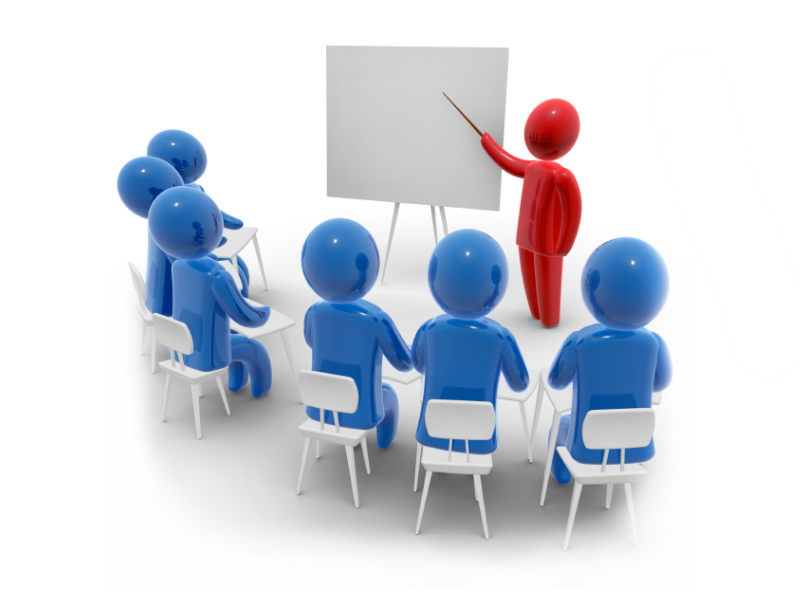The main directions of corporate training, the most relevant in the current environment, are the development of leadership and management competencies, professional and specialized training, training in knowledge of the company’s products and services, training in effective sales and customer service, training IT skills and using various business systems, and also training intended for partners and consumers. Separately, we should note the construction of competency models and the development of competencies necessary for the performance of specific roles by employees.
Training and development of personnel
Training and development of personnel is an urgent need for any developing company. Professional growth and professional development of employees, constant development of skills and competencies, development of a team approach to solving problems are those components of the corporate university that provide the company with success and leadership in its industry.
Benefits of training and development of staff for the company:
- An increase of labor productivity of employees and divisions
- Motivation of staff
- Forming an effective team approach based on awareness of the company’s goals and objectives
- Strengthening the company’s HR brand and increasing staff loyalty.
Benefits of training and development for staff
- Increase the level of competence and personal effectiveness
- Formation of sustainable skills and consolidation and structuring of knowledge on the topic.
Types of personnel training
- Compulsory training (safety rules, qualification training for increasing the level)
- Project training (mastering knowledge and technical capabilities in the framework of the project)
- Competence development (improvement of employees’ skills in management and in work activity)
- One-time training (aimed at solving a particular business problem), it is also called “learning from problems”, whereas the first three types of training are considered “learning from tasks”.
Stages of building a training program for staff
- Analysis of the company’s needs in the training and development of personnel and the development on its basis of a framework training system
- Carrying out categorization of employees in terms of their priority for training, conducting their evaluation according to these criteria
- Planning, creating a program, choosing training formats
- Conducting training
- Creating an environment to consolidate the knowledge and skills gained in practice
- Evaluation of training effectiveness
- Planning the further development of employees, taking into account the training already conducted.
- Formats of personnel training
Depending on the set business objectives, apply this or that method (format) of training:
- Business training is one of the most popular training formats, allows you to quickly learn and develop new skills
- Teaching business game (business simulation) – an interactive model of the economic system, as close as possible to the real situation that the employee must face in his work
- Seminar/conference – allows familiarizing with new information simultaneously a large number of participants of the event
- Workshop for the exchange of experience – replicating the best experience of participants on the basis of illustrative and complex situations from their personal practice
- Individual or group coaching – professional assistance provided by the coach (coach), a person or a group of people in determining and achieving their personal goals
- A strategic session, for example, team building session (team building)
- Development Centre – allows each participant to assess skills and competencies for a given topic and “aim to develop” precisely those elements of competence that are most needed for him
- Mixed training is currently gaining widespread use of the ability to combine classroom teaching and electronic distance learning. Due to the opportunity for the learner to choose the time of training and independently master the knowledge and skills, is ideal for busy people with a non-standard working day and for corporate training of employees of one firm without interruption of production.
Organization benefits to the competent organization by the personnel training system
- Growth in labor productivity
- Accelerate the adaptation of new employees and achieve the required level of efficiency
- Training of personnel with a minimum separation from the main job or even completely without interruption of duties; employees are provided with the necessary knowledge directly at the workplace
- Identification and preservation of the knowledge of employees, including those who leave the company for various reasons, the systematization of this knowledge and their effective use
- Easier implementation of organizational changes, less resistance to change
- Strengthening the loyalty of employees and consumers, increasing involvement
- Ensuring the continuity of employees in important positions, internal recruiting
- However, in order to realize all these – very tempting – perspectives in practice, training really should become a system. The organization needs to clearly present and adequately assess its own training needs, clearly articulate goals – both educational and business-related, in order to build a learning system based on these, company-specific introductory ones, and to make relevant elements in it.
Author Bio
Laura Holden is an elite industrialist and a social media blogger. In this article, she elucidates the significance of training and development programs for the staff. Moreover, she possesses many famous academic podiums such as essay help UK for students.
